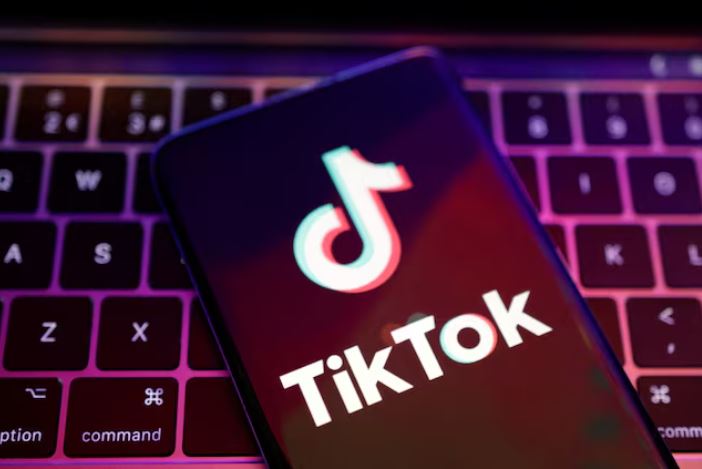TikTok, politicians and influencers named top sources of disinformation in Kenya - report

59 per cent of Kenyans believe influencers are responsible for spreading false or misleading information, well above the global average of 47 per cent.
Online influencers and political figures have emerged as the leading source of news distortion in Kenya, with a majority identifying them as the biggest threat to news accuracy.
According to the newly published 2025 Reuters Institute Digital Report, 59 per cent of Kenyans believe influencers are responsible for spreading false or misleading information, well above the global average of 47 per cent.
More To Read
- Meta to auto-convert Facebook videos into Reels in major update
- From stalls to screens: Eastleigh traders power quiet digital revolution through social media
- No more Google Ads: YouTube unveils new features to help Kenyan creators boost global reach
- Fake goods flood Kenyan online market, costing economy Sh800 billion annually
- TikTok launches ‘manage topics’ feature to let users personalise video feeds
- Court allows Facebook moderators’ case against Meta to proceed
The report released on Monday, June 23, 2025, notes that respondents also identified platforms such as TikTok and Facebook as key channels for disinformation globally.
The annual survey, based on online responses from English-speaking Kenyans aged 18-50, reveals that concerns over fake news remain especially high in Africa, where 73 per cent of respondents say they struggle to tell true from false information online.
Kenya and Nigeria emerged as the countries where influencer-driven disinformation is most worrying, followed closely by concerns about the role of politicians in spreading falsehoods.
“Young, educated, urban and affluent respondents were most likely to flag online personalities as a primary concern in the digital information landscape,” reads the report.
A recent investigation by AFP also exposed instances where prominent influencers in Kenya and Nigeria were hired by political parties and candidates to promote false narratives online.
Despite the concerns, social media platforms remain widely used for news consumption in Kenya. YouTube leads as the top platform for news at 54 per cent, followed closely by Facebook (52 per cent), WhatsApp (46 per cent), X (42 per cent) and TikTok at 38 per cent. Notably, TikTok has gained traction as one of the fastest-growing news platforms, although it is also perceived globally as one of the most significant sources of misinformation.
Facebook and TikTok topped the list of platforms most associated with false or misleading content. While Facebook has long been viewed as problematic, TikTok’s rapid rise has seen it surpass other platforms in perceived risk.
In contrast, messaging platforms like WhatsApp are viewed as less dangerous, given that discussions are more contained within trusted social groups. However, the report cautions that India remains an exception, where misinformation on WhatsApp has previously incited violence.
A key finding from the report is that just over one in ten users (11 per cent) believe friends and family contribute to the spread of misinformation. This reveals the complex web of both formal and informal channels through which disinformation circulates.
While audiences remain divided on whether social media companies are doing enough to remove harmful content, the report notes growing concern over moderation, especially in Europe and the United States. For instance, 57 per cent of Americans believe politicians are the top source of misinformation, and views on content regulation remain deeply polarised along political lines.
In Kenya, mobile usage continues to dominate news access, with 92 per cent using smartphones, 81 per cent using computers and 52 per cent using tablets to consume news. YouTube use for general purposes has increased to 63 per cent, with news use remaining stable at 30 per cent. The platform’s popularity in Kenya and other African nations is attributed to relatively low data costs and historical preferences for video due to lower literacy levels.
Kenya’s traditional media brands remain highly trusted despite these digital challenges. According to the report, outlets such as Citizen TV, NTV, and the Daily Nation enjoy trust levels of around 90 per cent among the online sample, reinforcing the strength of local legacy media. Overall, trust in news in Kenya stands at 65 per cent, slightly lower among under-35s but still significantly higher than in many countries surveyed.
The report also notes the rise of AI-powered tools and chatbots in the news ecosystem. While only seven per cent globally use AI chatbots for news weekly, this figure rises to 15 per cent among users under 25.
The report notes that in Kenya and other mobile-majority countries, “news aggregators and AI-powered notifications are becoming a primary source of breaking news.”
However, audiences remain cautious about the growing role of artificial intelligence in news. While many support AI use for summarisation (27 per cent), translation (24 per cent), and personalised recommendations (21 per cent), others fear it could reduce transparency, accuracy, and trust.
“A net 29 per cent believe AI will make news cheaper to produce and 16 per cent say it will make news more up-to-date, but 18 per cent think it will make news less trustworthy,” the report states.
Encouragingly, trusted news brands and official sources remain the top avenues people turn to when fact-checking questionable content across all age groups. Though younger users are more likely to consult social media or AI chatbots, legacy media retains its position as a vital pillar in countering misinformation.
Globally, the appetite for paid news content has plateaued. Only 18 per cent of respondents in wealthier countries pay for online news, with Norway (42 per cent), Sweden (31 per cent), and the US (20 per cent) leading in subscriptions. Lower figures are reported in places like Greece and Serbia (seven per cent) and Croatia (six per cent).
The report emphasises that while digital and AI-driven platforms continue to shape how news is accessed and consumed, the need for trustworthy, human-driven journalism remains vital, particularly in regions like Kenya, where misinformation risks are amplified by political and influencer-driven campaigns.
Top Stories Today













































